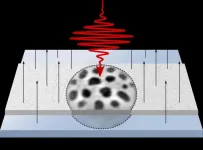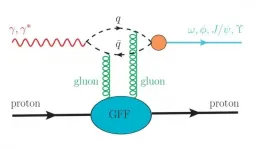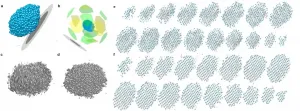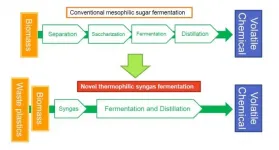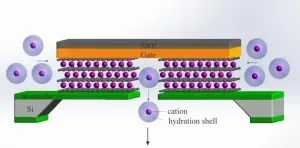Oleoyl-LPE exerts neurite stimulation and neuroprotection
2021-05-12
(Press-News.org) Lysophospholipids are phospholipids that have just one fatty acid chain, and in recent years, the role of lysophospholipids in physiology and pathophysiology has attracted attention. Lysophosphatidylethanolamine (LPE) is a type of lysophospholipid that are reportedly present in the brain that consist of many species with different fatty acid chain lengths and degrees of unsaturation. The latest studies in animal models have reported elevated levels of LPE in the brain after traumatic brain injury and cerebral ischemia. Fluctuations in LPE concentration have also been reported in the plasma of patients with major depression and Alzheimer's disease. Although these reports suggest the involvement of LPE in brain function, the role of LPE in the brain has remained unclear.
Therefore, a team of doctors led by Shinshu University's Institute for Biomedical Sciences first analyzed the composition of LPE species in the mouse brain using mass spectrometry and decided to investigate the role of 18: 1 LPE in nerve cells, which is abundant in the brain. As a result, it was clarified that 18: 1 LPE has a function of promoting neurite outgrowth of cerebral cortical neurons. Furthermore, it was revealed that 18: 1 LPE protects neurons from cell death due to glutamate toxicity. These results suggested that LPE plays an important role in brain function. This is the first elucidation of the role of LPE in neurons of the central nervous system. Glutamate toxicity is considered to be a major cause of nerve cell death due to acute diseases such as brain damage and cerebral ischemia, and neurodegenerative diseases such as Alzheimer's disease and amyotrophic lateral sclerosis. Therefore, our finding is expected to contribute to the development of treatment for these nerve damage.
Corresponding author of the study Dr. Takeshi Uemura states, "the study confirmed that 18: 1 LPE, which is one of the LPE species most abundant in the brain, has a function of promoting neurite outgrowth and protecting against neuronal cell death due to glutamate toxicity. It is suggested that LPE plays an important role in brain function."
The research group would like to further elucidate the physiological importance of LPE in the brain. Since there are other LPE species that are abundant in the brain besides 18: 1 LPE, the research group will investigate how other LPE species work in the brain. They will work with animal models to confirm whether symptoms such as nerve damage are improved by administration of LPE.
From a molecular biology perspective, it is important to clarify the receptor of LPE. The group believe that identifying specific receptors for individual LPEs and clarifying their signal transduction pathways will be the key to elucidating the physiological and pathophysiological roles of LPEs in the brain. The research group at Shinshu University's Institute for Biomedical Sciences hopes to lead the development of neuroprotective and therapeutic agents for cranial nerve damage targeting LPE and its receptors.
INFORMATION:
[Attachments] See images for this press release:

ELSE PRESS RELEASES FROM THIS DATE:
2021-05-12
Smaller, faster, more energy-efficient: future requirements to computing and data storage are hard to fulfill and alternative concepts are continuously explored. Small magnetic textures, so-called skyrmions, may become an ingredient in novel memory and logic devices. In order to be considered for technological application, however, fast and energy-efficient control of these nanometer-sized skyrmions is required.
Magnetic skyrmions are particle-like magnetization patches that form as very small swirls in an otherwise uniformly magnetized material. In particular ferromagnetic thin films, skyrmions are stable at room temperature, with diameters down to the ten-nanometer range. It is known that skyrmions can be created and moved by short pulses of electric current. Only recently it was discovered ...
2021-05-12
Researchers have recently extracted the proton mass radius from the experimental data.
A research group at the Institute of Modern Physics (IMP) of the Chinese Academy of Sciences (CAS) presented an analysis of the proton mass radius in Physical Review D on May 11. The proton mass radius is determined to be 0.67 ± 0.03 femtometers, which is obviously smaller than the charge radius of the proton.
In the Standard Model, the proton is a composite particle made of quarks and gluons and it has a non-zero size. The radius of the proton is a global and fundamental property of the proton. It is related to the color confinement radius -- a property governed by quantum chromodynamics (QCD).
The radius of the proton is approximately 100,000 times smaller ...
2021-05-12
Atoms are the basic building blocks for all materials. To tailor functional properties, it is essential to accurately determine their atomic structures. KAIST researchers observed the 3D atomic structure of a nanoparticle at the atom level via neural network-assisted atomic electron tomography.
Using a platinum nanoparticle as a model system, a research team led by Professor Yongsoo Yang demonstrated that an atomicity-based deep learning approach can reliably identify the 3D surface atomic structure with a precision of 15 picometers (only about 1/3 of a hydrogen atom's radius). The atomic displacement, strain, and facet analysis revealed that the surface atomic structure and strain are ...
2021-05-12
The study conducted by the University of Turku and the Finnish Institute for Health and Welfare together with an international research team is so far the largest population-level study in the world examining the connection between human gut microbiota and health and mortality in the following decades.
The composition of the research subjects' gut microbiota was analysed from stool samples collected in 2002. The researchers had access to follow-up data on the subjects' mortality until 2017, i.e., close to the present day.
"Many bacterial strains that are known ...
2021-05-12
Acetone, a volatile solvent used for everything from removing nail polish and cleaning textiles to manufacturing plastics, could get a sustainability boost from a new strain of bacteria engineered by a research team based in Japan.
They published the details of the heat-loving, acetone-producing bacteria called Moorella thermoacetica on April 23 in AMB Express.
Acetone is typically produced through the widely used cumene method, which is cost-effective but not sustainable. The process, developed in 1942, involves converting two non-renewable resources into acetone and phenol, another chemical ...
2021-05-12
The human brain is a vast network of billions of biological cells called Neurons which fires electrical signals that process information, resulting in our sense and thoughts. The ion channels of atomic scale in each neuron cell membrane plays a key role in such firings that opens and closes the ion flow in an individual cell by the electrical voltage applied across the cell membrane, acting as a "biological transistor" similar to electronic transistors in computers. For decades, scientists have learned that biological ion channels are life's transistors capable to gate extremely fast and precisely selective permeation of ions through the atomic-scale selectivity filters to maintain vital living functions. However, ...
2021-05-12
Researchers from the £12 million Developing Human Connectome Project have used the dramatic advances in medical imaging the project has provided to visualise and study white matter pathways, the wiring that connects developing brain networks, in the human brain as it develops in the womb.
Published today in Proceedings of the National Academy of Sciences of The United States of America, the study used magnetic resonance images (MRI) with unprecedented resolution from more than 120 healthy fetuses across the second and third trimesters of pregnancy to define how the structural connections in their ...
2021-05-12
Strawberry production is one of the driving forces in the Spanish agriculture sector, as strawberries are highly valued for their organoleptic characteristics and health benefits. These two factors, their economic relevance, and the value that consumers assign them, make this fruit an object of scientific research from multiple perspectives, including that of food safety. A research project headed by Liliana Pérez-Lavalle, Elena Carrasco, Pedro Vallesquino-Laguna, Manuel Cejudo, Guiomar Denisse Posada and Antonio Valero has aimed to evaluate whether the Salmonella Thompson bacteria, one of the pathogens that can contaminate the fruit through sewage and/or the soil, could penetrate through the roots ...
2021-05-12
Gold leaf -- gold metal hammered into thin sheets -- is used by artists and crafters to gild picture frames, artwork and clothing. Despite its luxurious appearance, the material is affordable and available at most craft stores. Now, researchers reporting in ACS Central Science have developed gold leaf electrodes that, in combination with a CRISPR-based assay, could sensitively detect human papillomavirus (HPV) DNA in human samples. The method also could be modified to diagnose other viral infections.
Previous research indicates that about 80% of new cases of sexually transmitted infections, such as HPV and human immunodeficiency virus (known ...
2021-05-12
Earthworms improve the soil by aerating it, breaking down organic matter and mineralizing nutrients. Now, researchers reporting in ACS' Environmental Science & Technology have dug up another possible role: reducing the number and relative abundance of antibiotic-resistance genes (ARGs) in soils from diverse ecosystems. These results imply that earthworms could be a natural, sustainable solution to addressing the global issue of antibiotic resistance, the researchers say.
The overuse of antibiotics in humans and animals has caused ARGs to accumulate in soils, which could contribute to the rise in antibiotic-resistant infections. Earthworms consume tons of soil per year worldwide, and their guts have a unique combination of low-oxygen conditions, neutral pH and native microbial ...
LAST 30 PRESS RELEASES:
[Press-News.org] Oleoyl-LPE exerts neurite stimulation and neuroprotection

